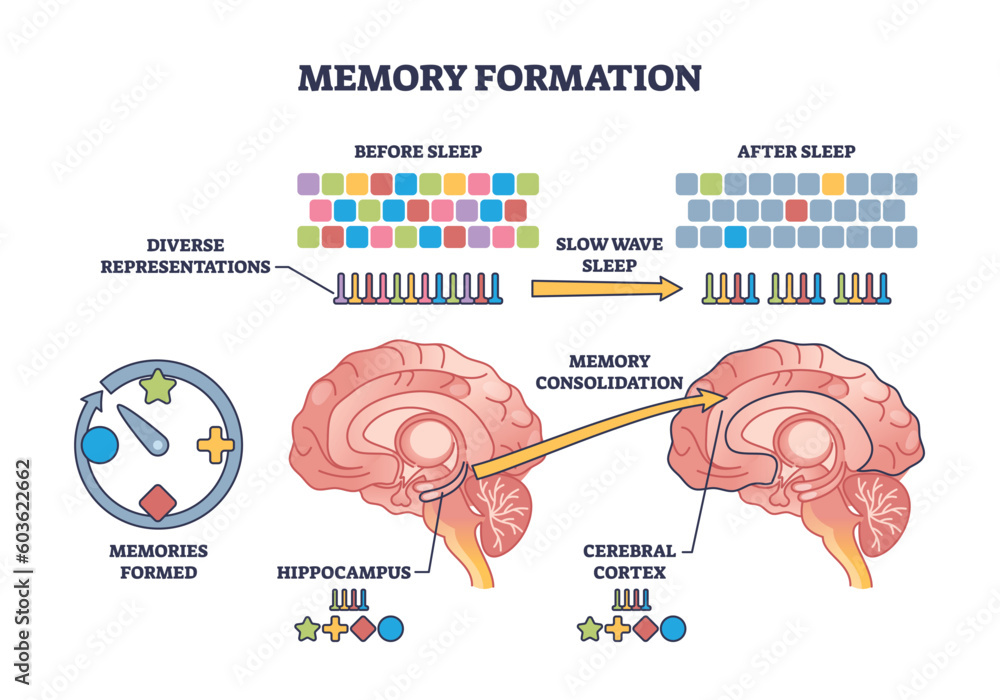Global Health Insights: Gawande’s Call to Action
Global health is a critical issue affecting millions worldwide, and few understand its complexities better than Atul Gawande. As a prominent figure who formerly led the U.S. Agency for International Development (USAID), Gawande has witnessed firsthand the consequences of dismantling essential health infrastructure. His insightful commentary highlights how the dramatic reductions in funding and staffing have devastated key health and science programs, leading to dire outcomes for vulnerable populations. While the challenges are immense, including the erosion of programs aimed at preventing maternal and childhood deaths, Gawande remains hopeful. He emphasizes the importance of commitment to global health, urging professionals to engage in solutions that can pivot the future of healthcare on a global scale.
The topic of global health encompasses a wide range of issues that impact health outcomes across nations. It involves the collaborative efforts of organizations and healthcare professionals worldwide to improve health standards and address health crises. Influential leaders, like Atul Gawande, have advocated for the preservation and enhancement of health infrastructure, stressing the need for robust support systems that influence maternal and child health positively. The deterioration of agencies such as USAID not only undermines these efforts but also threatens the health and science programs essential for combatting diseases globally. Engaging in discussions about these topics is crucial for fostering collaboration and innovation in healthcare solutions.
The Impact of USAID’s Dismantling on Global Health
The dismantling of USAID under recent administrations has led to a major void in global health initiatives, as highlighted by Atul Gawande. With the agency’s staff largely terminated and a significant portion of its health and science programs eliminated, the ramifications are felt worldwide. Millions of individuals who relied on USAID-funded initiatives for healthcare services, disease surveillance, and emergency response are now vulnerable due to these cutbacks. Gawande noted that the ability to respond to global health crises, such as outbreaks of infectious diseases like Ebola, has been severely compromised, leading to slower reaction times and potential loss of life.
Furthermore, the impacts of these reductions are not just limited to the international community; they profoundly affect the United States’ standing as a global health leader. By slashing funds and staffing, the U.S. has diminished its influence and capacity to spearhead health advancements. Gawande pointed to the drastic improvements in maternal and child health care that were achieved through USAID’s efforts, noting that the termination of programs designed to prevent childhood deaths has stripped away crucial support systems that directly save lives.
Revitalizing Health Infrastructure for the Future
Atul Gawande emphasizes that despite the extensive damage to health infrastructure, it is not too late to rejuvenate the systems and talents essential for improving global health. His remarks suggest a need for a collective effort to restore funding and support to health initiatives that have proven effective over the years. He argued that by recommitting to health and science programs, the U.S. can revive its role in establishing health policies that benefit both American citizens and the global community.
To advance health infrastructure, Gawande advocates for increased collaboration between government agencies, non-profit organizations, and academic institutions. This synergy is vital for fostering innovative solutions that can combat diseases more effectively. Through strategic partnerships, there is potential to reallocate resources and implement evidence-based programs that can further enhance health outcomes, particularly in resource-limited settings. Revitalizing these systems not only aids immediate health needs but also prepares communities for future global health challenges.
The Role of Science and Technology in Health Initiatives
In the evolving landscape of global health, science and technology play pivotal roles in enhancing health initiatives. Gawande’s experiences at USAID illustrated how technological advancements can streamline health care delivery, such as reducing response times to outbreaks from weeks to days. The integration of cutting-edge technology into health programs is essential for data collection, monitoring and evaluation, which can drive evidence-based decision-making in public health.
Moreover, leveraging technology empowers healthcare workers in remote areas by providing them with crucial tools and knowledge necessary for effective service delivery. As Gawande pointed out, the technical assistance that USAID provided helped increase vaccination rates significantly, showcasing the importance of follow-through after implementing solutions. Moving forward, embracing technology alongside strong health policies is fundamental to overcoming the challenges posed by emerging diseases and health inequities.
Gawande’s Vision for the Future of Health in America
Atul Gawande’s vision for the future reflects a hopeful outlook for global health, despite the challenges currently facing the U.S. He stresses the importance of continued commitment from individuals across sectors to support health and science initiatives, especially as the nation navigates its changing role in global leadership. Gawande envisions a scenario where American expertise complements international efforts, thereby creating a more collaborative approach to health improvement.
He also advocates for the engagement of new leaders who can drive innovation in health policy and practice. As Gawande noted, it’s vital for the U.S. to cultivate talent and invest in the next generation of health professionals, researchers, and policymakers. By doing so, the country can ensure a steady pipeline of expertise that will sustain progress in global health, regardless of the political climate.
The Significance of Maternal Health Programs
Maternal health programs have been a cornerstone of successful health initiatives supported by USAID. Gawande highlighted how these programs have not only improved healthcare access but also dramatically reduced maternal and infant mortality rates across many countries. By providing crucial resources and education to pregnant women, USAID has empowered communities to tackle the leading causes of maternal deaths, such as hemorrhaging during childbirth.
With the discontinuation of critical funding and support, the gains made in maternal health are now at risk. The urgency of reviving and scaling these interventions cannot be overstated. As health outcomes increasingly depend on robust healthcare infrastructure, Gawande’s call to action urges stakeholders to recognize the importance of investing in maternal health programs as a fundamental part of a comprehensive health strategy.
Challenges Faced by Health Research Institutions
Health research institutions, like the ones affiliated with Harvard that Gawande is associated with, face significant challenges amid funding freezes. The disruption of financial support affects ongoing research critical to advancing healthcare practices, especially in surgery and primary care. These research centers are vital for translating scientific discoveries into practical applications that can improve patient outcomes.
The loss of support for institutions that are at the forefront of health innovation threatens to stall progress in understanding and treating diseases. Gawande’s observations illustrate the perilous position of these institutions and the need for renewed commitment from both federal and state entities to ensure that vital health research continues unabated, particularly during times of crisis.
Navigating the Future of Federal Health Programs
America’s federal health programs stand at a crossroads, as highlighted by Gawande’s account of recent governmental actions. The strain on health funding has led to a critical reevaluation of how health services are delivered across the country. Gawande’s insights press for the necessity of innovative policy solutions to ensure that health care is accessible and effective, especially in underserved communities.
As the landscape of health funding evolves, there is an urgent need for a robust dialogue on how to adapt existing systems to meet the challenges ahead. Policymakers, health professionals, and the public must work together to redefine federal health programs in ways that prioritize efficiency, responsiveness, and community needs, fostering a system that is resilient in the face of both current and future health crises.
The Essential Role of Technical Assistance in Global Health
Technical assistance has been a vital aspect of the work done by organizations like USAID in improving health outcomes globally. Gawande emphasized the importance of this support in implementing health initiatives successfully, as it helps bridge the gap between policy formulation and practical execution. The ability to provide tailored support boosts vaccination rates and enhances the delivery of essential health services in low-resource settings.
Moreover, Gawande pointed out that the fundamental impact of technical assistance is in fostering local capacity. By empowering local health workers with training and resources, countries can build sustainable health infrastructures that do not rely solely on international aid. This shift toward self-sufficiency is crucial for promoting long-term health improvements and ensuring communities can effectively manage their health needs independently.
The Importance of Commitment to Global Health Education
Reflecting on his own experiences, Gawande underscores the necessity of commitment to global health education. He urges current and future generations of health professionals to remain steadfast in their pursuit of knowledge and practical skills. With the challenges that lie ahead in global health, cultivating a strong foundation in health education will enable these individuals to address complex health issues more effectively.
Moreover, Gawande encourages collaboration between academic institutions and field professionals to create curricula that reflect real-world challenges. By integrating experiential learning and interdisciplinary approaches, educational programs can prepare students to tackle the multifaceted nature of global health challenges. As noted by Gawande, this commitment to education is crucial for fostering the next wave of leaders who will champion health and science initiatives both in the U.S. and globally.
Frequently Asked Questions
What is the impact of dismantling USAID on global health programs?
The dismantling of USAID has had a profound negative impact on global health programs. According to Atul Gawande, the termination of over 85% of USAID’s programs has led to devastating consequences for millions globally, disrupting crucial health infrastructure that supports disease surveillance and response to outbreaks.
How did Atul Gawande’s role at USAID contribute to global health advancements?
Atul Gawande’s leadership at USAID played a significant role in advancing global health initiatives. He helped to build a network that improved emergency response times to deadly outbreaks from over two weeks to less than 48 hours, significantly enhancing global readiness against diseases such as Ebola and bird flu.
What challenges does global health face with reduced USAID funding?
With the reduction in USAID funding, global health initiatives face significant challenges, including diminished support for programs that prevent maternal and child deaths and treat diseases like HIV, tuberculosis, and malaria. This funding freeze jeopardizes health outcomes for millions and undermines years of progress.
What are the future prospects for global health if the U.S. steps back?
If the U.S. steps back from its leadership role in global health, other nations and new entities may rise to fill this void. Atul Gawande has expressed hope that despite current setbacks, future leaders will emerge, and global health efforts will continue, though possibly without American leadership at the forefront.
Why is the technical assistance provided by USAID critical to global health?
Technical assistance from USAID is critical because it facilitates effective follow-through on health initiatives, increasing vaccination rates and ensuring sustained improvements in healthcare delivery. This support helps bridge the gap between initial solutions and long-term health improvements.
In what ways can the health and science infrastructure be preserved after USAID’s changes?
To preserve health and science infrastructure despite recent changes at USAID, stakeholders must advocate for restoring funding, engage in partnerships with universities and medical centers, and maintain a focus on evidence-based practices to ensure that critical health initiatives continue.
| Key Point | Details |
|---|---|
| Impact of USAID Cuts | Over 85% of USAID programs terminated, causing major setbacks in global health initiatives. |
| USAID’s Importance | Stepped up emergency response time for outbreaks, such as Ebola, from over two weeks to less than 48 hours. |
| Global Health Achievements | Supported programs to prevent maternal and childhood deaths, improving outcomes for millions. |
| Hope for the Future | Despite challenges, Gawande expresses hope for future progress in global health if new leadership emerges. |
Summary
Global health has been significantly impacted by the dismantling of essential programs at USAID, as articulated by Atul Gawande. He emphasizes that while the integrity of past initiatives may be compromised, there is still an opportunity to rebuild and improve global health infrastructures. Gawande acknowledges that the participation of future leaders in health and science is crucial, and urges the ongoing commitment of students and professionals to the field of medicine. The future of global health hinges not only on governmental support but also on the expertise that individuals bring to the table, reinforcing the importance of resilience and dedication in this critical sector.


